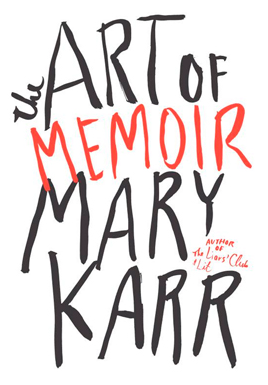The 1990s rang in an – if not the – era of memoir writing. Since then, memoir publications have surged and with them their readership as well as th e sound of cash registers ringing up sale after sale. One reason for their popularity can be traced back to the postmodern questioning of the very foundation upon which non-fiction was based: the concept of an infallible truth. This development, combined with the rise of social media and the willingness of people to share their intimate details with everyone, has provided fertile ground for many people of all backgrounds. Yes, academics as well as average people with little or no professional training as writers do try their hand at this ever-growing subgenre of creative non-fiction. And who can blame them? Why not write something for yourself, your family and friends as well as posterity, especially if history or mainstream society has ignored, silenced, or misrepresented you? And while there are a lot of trashy, gossipy, or unfaithful memoirs, the public as well as critics and scholars are starting to agree that memoir – if done with true honesty, voice, and a dose of creativity – can be just as powerful and masterful as the best fiction writing. So, to the autobiography I would say: “Move over bacon, there is something meatier!” And its name is memoir.
e sound of cash registers ringing up sale after sale. One reason for their popularity can be traced back to the postmodern questioning of the very foundation upon which non-fiction was based: the concept of an infallible truth. This development, combined with the rise of social media and the willingness of people to share their intimate details with everyone, has provided fertile ground for many people of all backgrounds. Yes, academics as well as average people with little or no professional training as writers do try their hand at this ever-growing subgenre of creative non-fiction. And who can blame them? Why not write something for yourself, your family and friends as well as posterity, especially if history or mainstream society has ignored, silenced, or misrepresented you? And while there are a lot of trashy, gossipy, or unfaithful memoirs, the public as well as critics and scholars are starting to agree that memoir – if done with true honesty, voice, and a dose of creativity – can be just as powerful and masterful as the best fiction writing. So, to the autobiography I would say: “Move over bacon, there is something meatier!” And its name is memoir.
Finally, an accessible meditation on memoir writing has surfaced and taken the New York Times bestseller list by storm. Mary Karr – essayist, Professor of English Literature at Syracuse University, and author of the sinfully popular memoir, Liars’ Club – has written an entertaining, thoughtful, and tell-it-like-it-is guide and good read all under one cover. The Art of Memoir (2015) not only provides sound advice to the memoirist-to-be, but is also filled with zingers and memorable quotes. Here are a few of my favorites that belong in every creative non-fiction class, if not on every coffee table:
- “Partly what murders me about memoir […] is its democratic (some say ghetto-ass primitive), anybody-who’s‑lived-can-write-one aspect” (xiii).
- “In memoir the heart is the brain. It’s the Geiger counter you run over memory’s landscape looking for precious metals to light up. A psychological self-awareness and faith in the power of truth gives you courage to reveal whatever you unearth, whether you come out looking vain or conniving or hateful or not” (151).
- “I threw away over 1,200 finished pages of my last memoir and broke the delete key on my keyboard changing my mind. If I had any balls at all, I’d make a brooch out of it” (160).
Consisting of twenty-four chapters, The Art of Memoir does not linger on any one topic; the width of topics covered is amazing. Especially noteworthy is her chapter entitled, “The Truth Contract Twixt Writer and Reader,” which concludes with a very useful list of commonly accepted “liberties” for bending the truth in memoir writing, an excerpt worthy of my own life writing seminar’s precious time. It certainly gets the discussion going. Other highlights include: “Dealing with Beloveds (On and Off the Page)” as well as “Blind Spots and False Selves.” As with any book on writing, not all of the chapters caught me bending my knee in honor of voice, veracity, or vantage, but – to use the vernacular so prevalent in the mouth of the professor-memoirist under scrutiny here – it is pretty damn good. I’m glad she had the balls to write it.
21,730 Total Views, 6 Views Today






